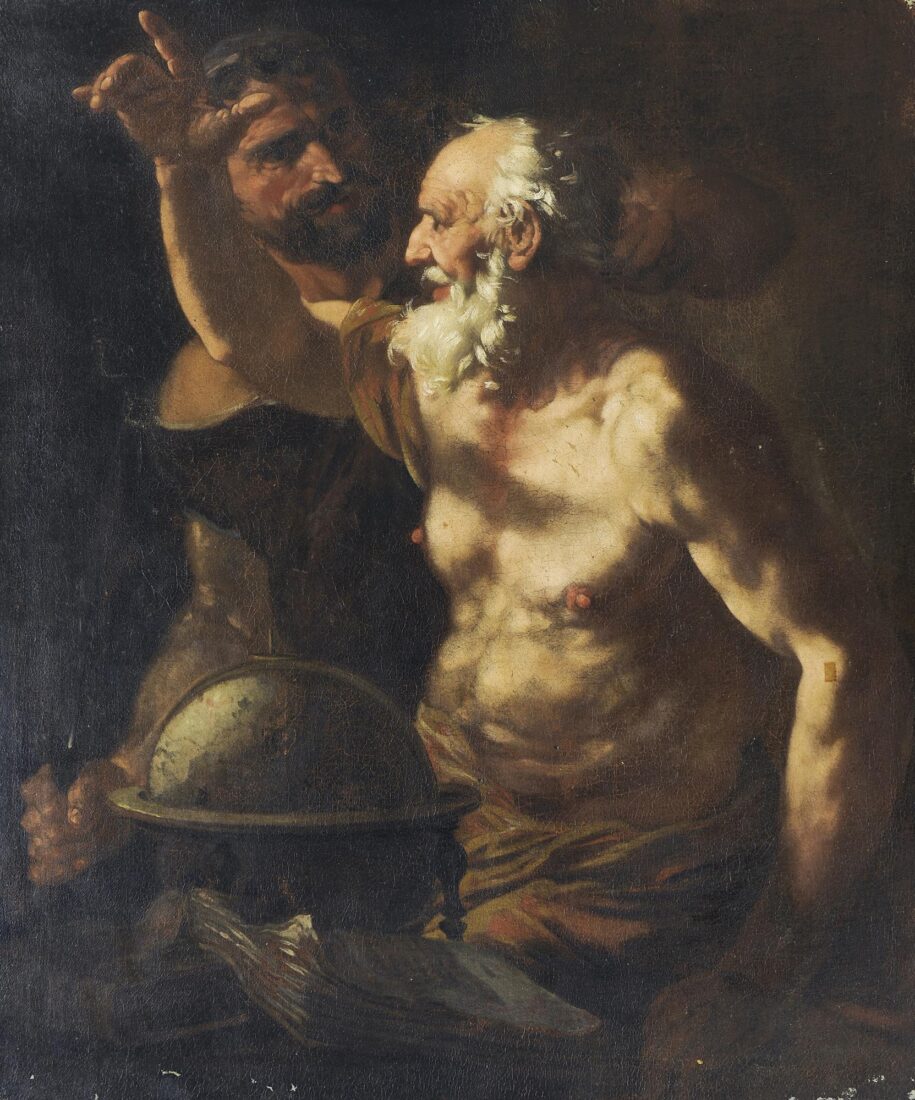We use cookies to make our site work properly, to personalize content and ads, to provide social media features and to analyze our traffic. We also share information about how you use our site with our social media, advertising and analytics partners. Read the Cookies Policy.

Loth Johann Carl, the so-called Carloto (1632 - 1698)
The Death of Archimedes
Oil on canvas, 120 x 98 cm
Donated by Kreon and Athina Kyriakidis
When this work was made part of the collection at the National Gallery, it was at first attributed to Jusepe de Ribera (1591-1652) who settled in Naples where he became acquainted with Caravaggio and fell under his influence. Professor Gerhard Ewald, however, attributed the work, in his book Johann Carl Loth (1632-1698), Amsterdam 1965, to the German painter Johann Carl Loth.
In the work at the National Gallery one sees, in all likelihood, a depiction of Plutarch’s version of how Archimedes died. This occurred during the conquest of the Syracusans by the Roman legions under Marcellus. “As fate would have it he was alone, intent on working out a problem by means of a diagram. And as both his mind and his eyes were absorbed with these speculations, he remained completely unaware of the Roman incursion, not even realizing the city had been taken. Suddenly, he found himself face to face with a soldier who commanded him to follow him to Marcellus. But Archimedes refused to budge until he had solved the problem to his satisfaction and demonstrated it. This infuriated the soldier who drew his sword and ran him through…” (translation of the relevant section on Marcellus of the Greek edition of “Plutarch’s Lives”, edit. Philologiki, vol. II, Athens, n.d., p. 212). In the painting, the soldier, holding his sword in one hand, has lifted it with a violent movement and is holding Archimedes by the throat; he appears quite unfazed, with an absorbed look and making an emphatic gesture which shows his determination to not go with him until he has solved the problem he is involved with.
The composition is faithful to all the elements characteristic of Loth’s works. The soldier and Archimedes create, with their bodies, the sphere and the account books, a compact group that occupies nearly the entire surface of the painting. The soldier, tall and well-built, is in almost complete shadow, standing behind Archimedes’ uplifted arm while the light falling on the primary plane in practically the center of the composition, creates contrasts between the light and dark planes, revealing the elderly body of Archimedes, still strong despite his great age, as well as his strong-willed personality. The dark brown colors in combination with the intense lighting serve to stress the dramatic character of the scene.

